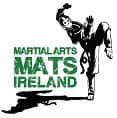To put it very simply, external martial arts generally focus on the physical application of force. Internal arts have greater focus on the use of chi or ki energy, and there is an emphasis on health benefits as well as self defence. Of course there are many grey areas in between, and students of an art like aikido might argue it offers both – development and use of ki energy for health, but the ability to deliver techniques as powerful as striking art like karate. You can also move into definitions for ‘hard’ and ‘soft’ martial arts – the latter using redirection and deflection rather than direct opposing force.
The two opposing images of martial arts clichés can sum up the wide spectrum of martial arts. At the one end, picture MMA fighter Bas Rutten, covered in sweat and blood in an all out fight in the ring. At the other, picture an elderly Chinese gentleman, smiling and serene as he stands calmly facing his opponent. Anyone with a lack of understanding of martial arts might view Bas Rutten as the ‘warrior,’ but if you’ve experienced different styles, techniques and cultures you might have a very different opinion.
To the uninitiated, Tai Chi is like yoga, and is for old Japanese people, and Qigong is just about breathing and stretching. Without slipping into the mythical realms of movies like Crouching Tiger Hidden Dragon, and magical warriors who can fly through the air and land balancing on the edge of a sword, there are things about Eastern arts which very few people have experienced or will ever understand. Chi or ki energy are something most Westerners are sceptical even exists, but to millions of people in China or Japan are part of everyday life. It’s interesting to note that Western medicine has now acknowledged the ways acupuncture can be used in modern medicine.
Sadly, most Westerners lack the patience to study and practise internal martial arts. Hours of padwork, press ups and sparring generally has greater appeal than practising balance, meditation and breathing.It’s generally true that results can be achieved more quickly in external martial art styles if self defence and street fighting are your goals, but you can miss out on so many other aspects of training if you don’t at least experience something like Qigong.
Qigong influences dimensions of our being that are not part of traditional exercise programs. Exercises classes that take place in most gyms and sports centres don’t involve the meridian system used in acupuncture, and don’t emphasise the importance of adding mind intent and breathing techniques to physical movements. When these extra dimensions are added, the benefits of exercise increase exponentially. The application of mental focus and correct breathing can add incredible power to strikes and blows, and all martial artists should take the time to explore this.

